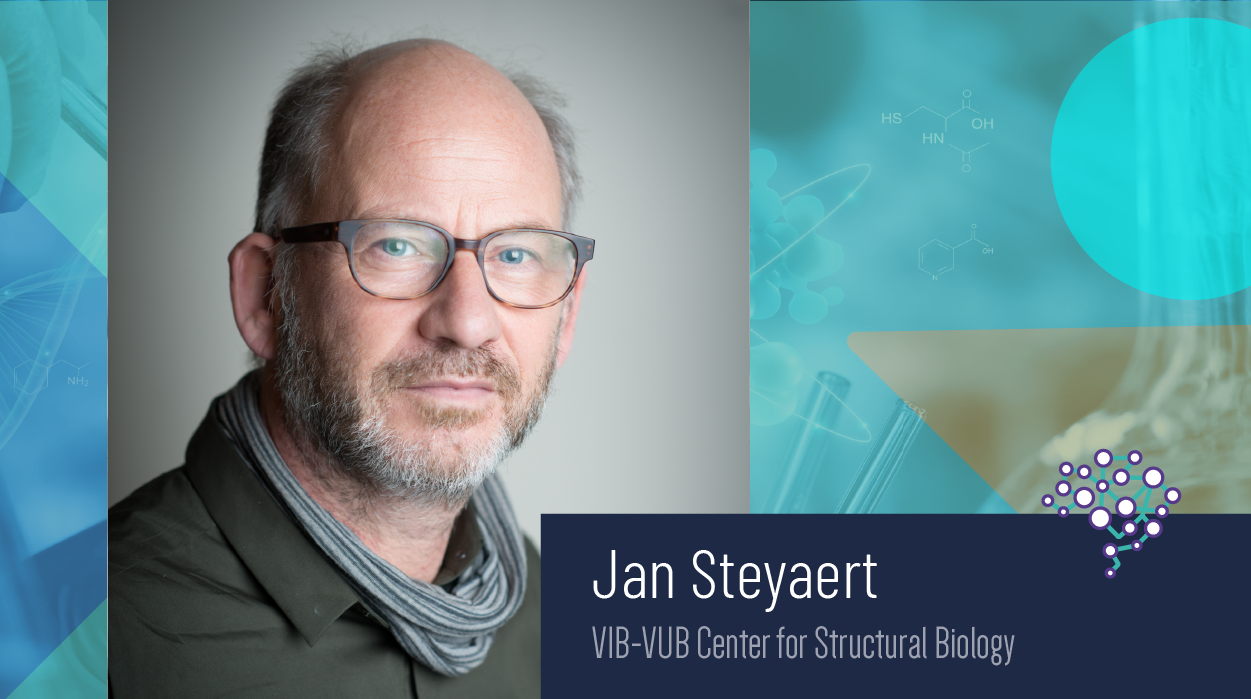Jan Steyaert receives prestigious Gabbay Award for pioneering work on Nanobody® technology
Steyaert is the first Belgian scientist to receive the prestigious American award for outstanding science with a translational character
Jan Steyaert, director of the VIB-VUB Center for Structural Biology and professor at Vrije Universiteit Brussel (VUB), is the first Belgian scientist to receive the Jacob and Louise Gabbay Award. Steyaert was nominated for the award thanks to his contributions to structural biology through the development of Camelid single-domain antibodies or so-called Nanobodies. The discovery of these small antibodies has led to important breakthroughs in medicine and agriculture, with practical applications already on the market today.
Each year, the Boston based Brandeis University presents the Jacob and Louise Gabbay award to scientists in academia, medicine, or industry whose work has led to outstanding scientific breakthroughs with practical applications. The 24th edition of the award goes to VUB-professor Jan Steyaert for his essential contributions to nanotechnology and the translational characteristics of his research.
Steyaert was instrumental in the development and engineering of Nanobodiesor Camelid single-domain antibodies for applications in structural biology and drug design. This groundbreaking technology is used to study the structure and function of proteins, which significantly advances scientific knowledge. To date, the Nanobody technology sees a broad spectrum of applications, both in medicine and agriculture. The technology was at the basis of three VIB spin-off companies, Ablynx, Biotalys, and ConfoTherapeutics, that use Nanobodies to develop therapeutic interventions for life-threatening diseases and crop protection.
Dagmar Ringe, Chair of the Award Committee: “Jan Steyaert is being recognized for the introduction of nanobody technology as exquisite tools to lock inherently unstable, dynamic proteins into single functional conformations. His work is not only important for mechanisms in structural biology but also structure-based drug discovery within the context of the pharmaceutical industry.”
Nanobody pioneers are far from finished?
The Steyaert lab pioneered the use of nanobodies in X-ray crystallography, aiming at the highest-hanging fruits of structural biology including membrane proteins, amyloidogenic proteins, and now also (transient) multiprotein complexes. More recently, the lab is focusing on exploiting Nanobodies for drug discovery on difficult targets like GPCRs and on the engineering of nanobodies to be used in single-particle cryo-EM and OMICs applications. The key of Steyaert’s success lies in sharing these disruptive technologies with the best research teams in the world and moving past the barriers of protein science and drug discovery.
The Gabbay award is a meaningful recognition of the importance of Steyaert’s discoveries and a welcome reminder of the potential applications of Nanobody technology. Steyaert is the first Belgian scientist to join a list of influential scientists such as Jennifer Doudna and Emmanuelle Charpentier having received the Gabbay Award. The award was presented on October 27th in a ceremony co-sponsored by the Office of the President and the Rosenstiel Basic Medical Sciences Research Center at Brandeis University in Massachusetts.
Jan Steyaert, VIB-VUB Center for Structural Biology: “The technologies we develop are becoming mainstream in Europe. This prestigious award from overseas illustrates our global impact on basic research and on the biotech industry as a whole.”
More info can be found on www.steyaertlab.brussels
Joran Lauwers
About Jan Steyaert
Jan Steyaert is a Highly Cited Researcher affiliated to Vrije Universiteit Brussel and VIB. His publications are in the top 1% for citations by other researchers. As a successful serial entrepreneur, he and his team are also on the verge to incubate new ventures.
About the VIB-VUB Center for Structural Biology
Proteins are the most important building blocks of all life. They are responsible for the metabolic processes in a cell, they give the cell its shape and enable cooperation between the various cells and tissues in our bodies. Scientists at the VIB-VUB Center for Structural Biology study the basic principles that determine the function and action of a protein in the cell. In this way, we can develop new technologies and bio-based materials.
More info can be found www.structuralbiology.brussels
.png)




